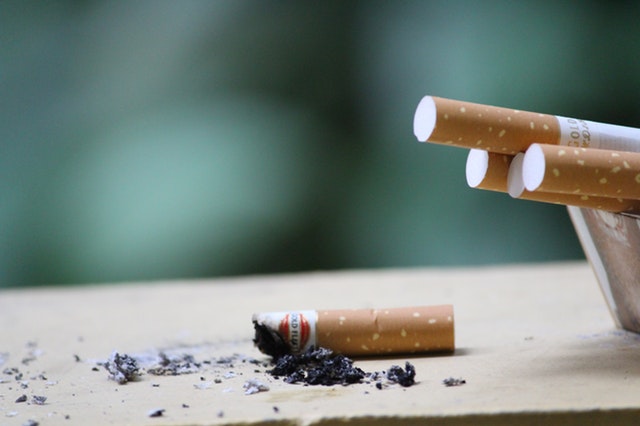Lung cancer is one of the leading causes of cancer-related deaths in the Philippines. Many cases are attributed to smoking but one’s family history and prolonged exposure to certain chemicals, compounds, and radioactive minerals are also risk factors.
People with a history of smoking are at higher risk of acquiring lung cancer, which occurs with no signs and symptoms at its early stages. So, the question is– how to know if I have lung cancer already? Well, It is recommended that they undergo a regular preventive health check to determine any changes in their lungs.
Current smokers or smokers who have quit within the past 15 years are highly encouraged to undergo lung cancer screening procedures in order to find any abnormality in the lungs which may lead to cancer. Lung cancer symptoms normally manifest when the cancer is already at an advanced stage. Screening must be done even before symptoms occur so that cancer can be detected at its most treatable stage. More lives can be saved through early detection.
After an initial physical examination and discussion of health history, the patient will undergo diagnostic procedures recommended by their doctor.
Types of Diagnostic Procedures
Chest X-ray
Standard chest x-ray, also known as a radiograph, is the most common preliminary test to check on the presence of tumors or cancer in the lungs.
Computed Tomography (CT) scan
A CT scan generates cross-sectional images of the body by digitally combining data from several x-rays. This painless procedure provides a clearer picture by using a small amount of radiation compared to conventional x-rays. It can identify abnormal spots in your lungs called ‘lung nodules’ that vary in size, shape, consistency, and density. Not all lung nodules are cancerous.
Lung Cancer Philippines cited Centers for Disease Control and Prevention (CDC) guidelines for determining who should undergo regular low-dose CT scan (LDCT). These are individuals who are at high risk of developing lung cancer and could either be one of the following: those who currently smoke or have quit smoking within the last 15 years, those with a smoking history of 30 years or more, and those between 55 and 80 years of age.
Further testing may be done depending on the results of the first screening or if there are any changes in lung nodules over time.
Biopsy
The doctor may discuss steps after cancer diagnosis. A biopsy involves using a needle to remove a small amount of tissue for examination under the microscope. The doctor may order one or more of the following to collect samples:
- Thorascopic biopsy, which involves inserting an endoscope through the chest wall and into the chest cavity to obtain lung tissue.8
- Thoracentesis is a procedure which removes excess fluid from the lungs. The fluid is then examined in a lab. This also helps relieve shortness of breath and chest pains.
- Fine-needle aspiration or percutaneous needle lung biopsy involves taking a lung tissue sample by passing a needle into the lung guided by a CT scan.8
- Open biopsy is a surgical procedure to remove a piece of lung tissue.8
If the biopsy is positive for cancer cells, the pathologist should be able to identify the type of lung cancer present. This can then help both doctors and patients make well-informed decisions about the best course of treatment.
Bronchoscopy
Bronchoscopy is a diagnostic medical procedure where a long thin tube is passed through the mouth/nose and into the breathing tubes. This may be done under local or general anaesthetic.
There are risks involved in lung cancer screening including exposure to radiation and a false-positive test result – a test result that suggests a person may have lung cancer when there is no cancer present. It is always best to consult a medical oncologist to talk about the best lung cancer diagnostic procedure for you.
References:
1. Lung Cancer Screening Guidelines. Retrieved from https://www.cancer.org/health-care-professionals/american-cancer-society-prevention-early-detection-guidelines/lung-cancer-screening-guidelines.html
Date Accessed 23 Mar 19
2. Can Lung Cancer Be Found Early. Retrieved from https://www.cancer.org/cancer/lungcancer/-prevention-and-early-detection/early-detection.html
Date Accessed 23 Mar 19;
What do I need to know about lung cancer screening. American Lung Association.
https://www.lung.org/lung-health-and-diseases/lung-disease-lookup/lung-cancer/learn-about-lung-cancer/lung-cancer-screening/
Accessed 24 April 19.
3. X-Ray (Radiography) – Chest. Retrieved from
https://www.radiologyinfo.org/en/info.cfm?pg=chestrad
4. Computed Tomography (CT) – Body. Retrieved from
https://www.radiologyinfo.org/en/info.cfm?pg=bodyct
Date Accessed 23 Mar 19
5. Understanding Nodules. Retrieved from https://lungcanceralliance.org/wpcontent/uploads/2017/09/Understanding_Nodules_one_pager.pdf
Date Accessed 23 Mar 19
6. Who Should Be Screened From Lung Cancer. Centers for Disease Control and Prevention.
Retrieved from https://www.cdc.gov/cancer/lung/basic_info/screening.htm
Date Accessed 23 Mar 19
7. Thoracentesis. Johns Hopkins Medicine. https://www.hopkinsmedicine.org/health/treatmenttests-and-therapies/thoracentesis
Accessed 23 April 19.
8. Lung Biopsy. Johns Hopkins Medicine. https://www.hopkinsmedicine.org/health/treatment-testsand-therapies/lung-biopsy
24 April 2019.
9. Bronchoscopy. Retrieved from https://www.nhlbi.nih.gov/health-topics/bronchoscopy
Date Accessed 23 Mar 19
10. What to Expect from a Lung Cancer Screening. Retrieved from https://www.lung.org/ourinitiatives/saved-by-the-scan/resources/what-to-expect-from-lung-cancer-screening.html Date
Accessed 23 Mar 19
PH-KEY-00036



